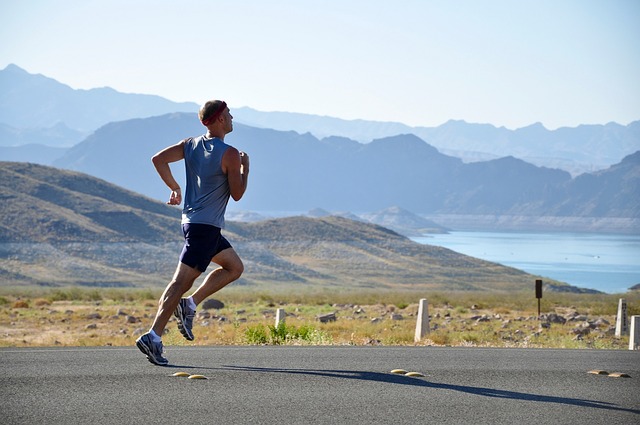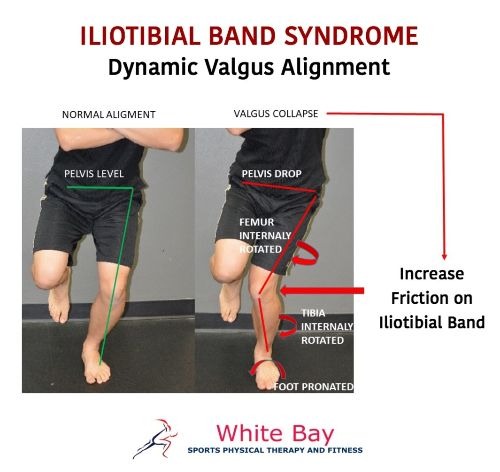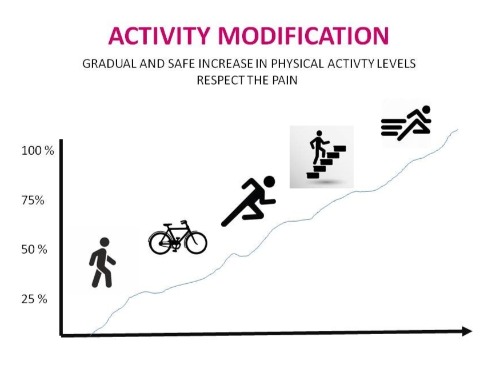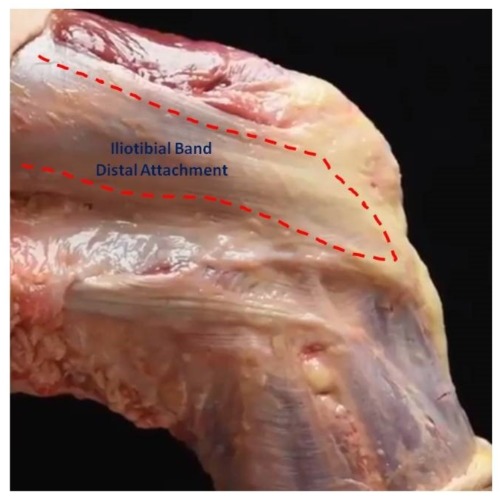
11 Jul Iliotibial Band Syndrome: Causes and Treatments
Iliotibial band syndrome (ITBS) is one of the most common causes of knee pain, particularly in individuals involved in endurance sports like long distance, runners, marathonists, and triathlonists. It accounts for up to 12% of running injuries and up to 24% of cycling injuries. ITBS is typically managed conservatively through physical therapy and temporary activity modification.

What is Iliotibial Band Syndrome (ITBS)?
Iliotibial band syndrome (ITBS) occurs when excessive irritation causes pain at the outside (or lateral) part of the knee. The iliotibial band (ITB), often referred to as the “IT band” is a type of soft tissue that runs along the side of the thigh from the pelvis to the knee. As it approaches the knee, its shape thickens as it crosses a prominent area of the thigh (femur) bone, called the lateral femoral condyle. Near the pelvis, it attaches to 2 important hip muscles, the tensor fascia latae (TFL) and the gluteus maximus.
Irritation and inflammation arise from friction between the ITB and underlying structures when an individual moves through repetitive straightening (extension) and bending (flexion) of the knee. Typically, ITBS pain occurs with overuse during activities such as running and cycling.
ITBS involves many lower extremity structures, including muscles, bones, and other soft tissues. Usually discomfort arises from:
- Abnormal contact between the ITB and thigh (femur) bone
- Poor alignment and/or muscular control of the lower body
- Prolonged pinching (compression) or rubbing (shearing) forces during repetitive activities
The common structures involved in ITBS are:
- Iliotibial band
- Bursa (fluid-filled sack that sits between bones and soft tissues to limit friction)
- Hip muscles
ITBS can occur in:
- Athletes performing repetitive activities, such as squatting, and endurance sports such as running and cycling
- Individuals who spend long periods of time in prolonged positions, such as sitting or standing for a long workday, climbing or squatting, or kneeling
- Individuals who quickly start a new exercise regimen without proper warm-up or preparation
Signs and Symptoms
With ITBS, you may experience:
- Stabbing or stinging pain along the outside of the knee
- A feeling of the ITB “snapping” over the knee as it bends and straightens
- Swelling near the outside of your knee
- Occasionally, tightness and pain at the outside of the hip
- Continuous pain following activity, particularly with walking, climbing, or descending stairs, or moving from a sitting to standing position
Pain is usually most intense when the knee is in a slightly bent position, either right before or right after the foot strikes the ground. This is the point where the ITB rubs the most over the femur.
How Is It Diagnosed?
Your physical therapist will ask you questions about your medical history and activity regimen. A physical examination will be performed so that your physical therapist can collect movement (range of motion), strength, and flexibility measurements at the hip, knee, and ankle.
When dealing with ITBS, it is also common for a physical therapist to use special tests and complete a movement analysis, which will provide information on the way that you move and how it might contribute to your injury. This could include assessment of walking/running mechanics, foot structure, and balance. Your therapist may have you repeat the activity that causes your pain to see firsthand how your body moves when you feel pain. If you are an athlete, your therapist might also ask you about your chosen sport, shoes, training routes, and exercise routine.
Typically, medical imaging tests, such as x-ray and MRI, are not needed to diagnosis ITBS.
Dynamic Valgus Alignment and Iliotibial Band Syndrome
Dynamic Valgus happens during normal single leg activities. With poor mechanical control of the Pelvis and Lower Extremity the knee will go into an Excessive Dynamic Valgus . In this case the Patella and the lateral aspect of the knee will come under excessive stress. All these deviations are even more noticeable when striking on the foot during running.
Excessive Dynamic Valgus components:
- Pelvis Drop
- Femur rotates internally
- Tibia also rotates internally
Foot collapses inwards (excessive pronation)

Physical Therapy Treatment
Due to multifactorial causes of Iliotibial Band Syndrome we need to Identify the cause first and then treat it accordingly
Possible Causes of ITBS are
1 – Weak Hip Muscles – Excessive Dynamic Valgus
Weak muscles in the hip tend to cause your running form to break down, which puts a lot of stress on the tissues in the knee
Weakness in Gluteal Muscles is always found in ITBS, where these muscles are unable to control the dynamic valgus alignment of the lower extremity causing excessive use of the Iliotibial Band for maintaining the running form
Treatment
Hip dominant exercises to increase strength of Hip extensor and Hip External rotators muscles
Clam shells
Isometric Hip Abduction
Bridges
2 – Poor Running Form
One of the most common causes of ITBS associated with Running Form is over striding (taking too long of steps) and strides that cross over the mid-line of the body. These are pretty easy to notice and can sometimes be pointed about by a runner coach. Sometimes, however, poor form can be more subtle and require something more involved like a video gait analysis
Treatment
Work on Running Mechanics and get your running technique analyzed by a professional
3 – Shoe or Foot Issues
Overworn shoes can cause your foot to land at awkward angles, which transfers a lot of stress up to the knee and hip, so keeping your shoes within their recommended mileage is critical
Foot deviations can also contribute to ITBS
Treatment
Replace old running shows that are worn out
4 – Overuse: Too much load , too Fast as the cause of ITBS
Think about building friction over time:
- More training ( rapid increase in mileage ),
- More intensity of the training (hill workouts , repetitive jumps)
- More frequent races
- Returning to run after a long period of inactivity
- Too much Load, applied too fast…
In these situations, the Iliotibial band will become irritated first and more painful over time. Runner will continue training at the beginning because pain usually goes away with warm up. As the condition progresses and the root of the problem is not solved , pain will continue increasing in intensity and it will not disappear with warm up, continuing getting worse till one day the athlete can not compete anymore
So we as therapist will look for recent alterations in sporting activities. Any changes in the frequency, duration and intensity of training should be investigated in detail.
The training program also should be appraised for errors, including increasing the exercise intensity too rapidly, inadequate recovery time and extreme hill workouts.
Treatment

Educate the runner in the importance of loading the joint progressively. For example, return to run in small amounts and with proper rest time in between practice runs. Increase load very slowly and paying a lot of attention to the Pain during the these practices and the pain afterwards to decide when to load the joint again.
5 – Increased tightness and pain in ITB

The ITB is a very thick tissue with almost no ability to stretch so trying to stretch the Iliotbial band is a waste of time.
Treatment
With this in mind, we use a combination of techniques (cupping and Instrument Assisted Soft Tissue Mobilization) to modulate and decrease pain in this area, not with the purpose of stretching anything but with the idea of modulating the pain and increasing the tolerance to the activity. By moving the area properly the pain will get better soon.
Foam Rolling: it might help as well in terms of modulating the pain but make sure to roll it on the side of the thigh from the middle up. Do not foam roll the painful area by the knee, this will only increase the irritation on the band.
Running Essentials
Do you have any questions? Drop a note, we’d love to hear from you.
Sign Up and ask the Therapist.
Lionel Pannunzio is a Physical Therapist and Board-Certified Sports Specialist, owner of White Bay Physical Therapy.
He has been helping runners for more than 20 years
“Keeping Athletes in the game”
With offices located at 17180 Royal Palm Blvd – Weston – Florida – 33326
You can reach him at 754-244-2561
Visit his website: www.wbsphysicaltherapy.com
[email protected]





Sorry, the comment form is closed at this time.